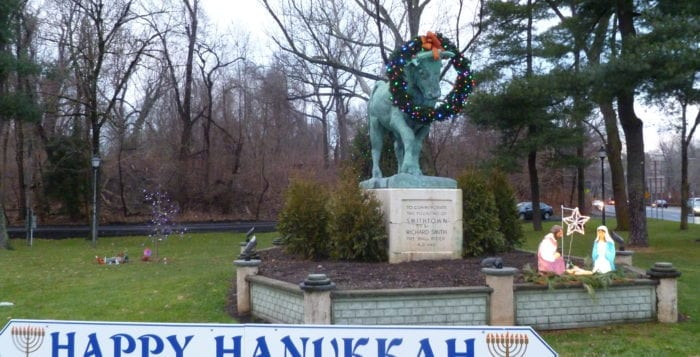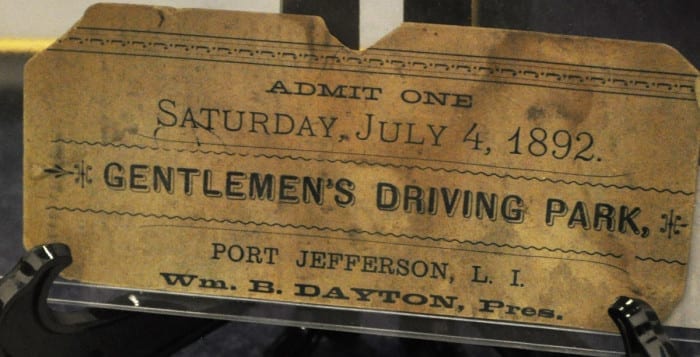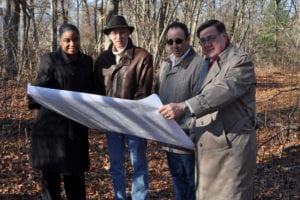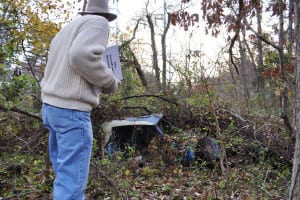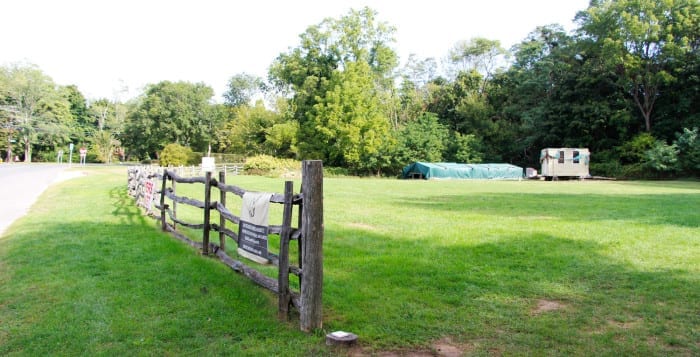Whisper the Bull has long been an iconic landmark in Smithtown, standing at the west entrance of town at the intersection of Routes 25 and 25A, but recently is gaining attention at the state level.
Smithtown resident Corey Geske announced the New York State Department of Parks, Recreation and Historic Preservation has determined the Whisper the Bull statue is officially eligible for the New York State and National Register of Historic Places. Geske called on Town of Smithtown officials at their Dec. 11 meeting to sign off on and complete the application that could protect the statue for generations to come.
“I’m bullish on seeing downtown revitalized with historic preservation leading the way,” she said. “So, let’s get Whisper registered.”
“I’m bullish on seeing downtown revitalized with historic preservation leading the way.”
— Corey Geske
Geske said it was in 2017 she first proposed a three-part conceptual plan for revitalization of downtown Smithtown to elected officials. One key component was the creation of a historic corridor along Main Street/Route 25A starting at the western edge with the bull statue.
“It’s comparable to the Charging Bull on Wall Street, the famous sculpture that brings in tourists from around the world” she said. “We have something to be very proud of, it’s a world-class sculpture.”
The concept of creating a statue for Smithtown was first conceived in 1913 by town founder Richard Smythe’s descendant, Lawrence Smith Butler, while he attended the National School of Fine Arts in Paris. He asked a fellow student Charles Cary Rumsey for help, who came up with depicting the centuries-old legend of Smythe riding the town’s boundary on a bull to claim it.
Geske said she uncovered the sculpture’s history when drafting the nearly 80-page report in April to be submitted to the state for a determination on whether it was eligible to be named a historic place.
New York State’s Registry of Historic Places is an “official list of buildings, structures, districts, objects, and sites significant in the history, architecture, archeology, engineering, and culture of New York and the nation,” according to the state’s website. Four criteria considered by the state in evaluating the statue include: whether its associated with events that have made a significant contribution to history, associated with the life of a significant person, if it possesses high artistic value or yields information important to history.

Geske said she received a letter in July from the state parks department that Whisper is eligible, but the Town of Smithtown must be the applicant as they are the official owner of the statue.
“We will be moving forward with the approval on that,” town spokeswoman Nicole Garguilo said. “Once it’s on the registry, we will be applying for grants to take better care of it.”
One immediate concern of both Geske and Smithtown’s elected official is a crack visible on the cement pedestal on which the 5-ton sculpture rests. It is visible immediately along “Smithtown” in the inscription and can be seen running from front to back of the platform. Garguilo said the town has plans to repair the base this upcoming spring under the direction of Joseph Arico, head of the town’s parks department.
“It’s our understanding any restrictions the historical register would require [to] be maintained pertain to the bull itself, not the base or anything around the base,” she said.
If Whisper the Bull is approved as a state historic place, Geske said it would be the first phase before applying to have it placed on the national registry. She hopes to follow up by seeking historic status for other Main Street buildings, including the 108-year-old Trinity AME Church on New York Avenue, the 105-year-old Resurrection Byzantine Catholic Church on Juniper Avenue and the 265-year-old Arthur House.

